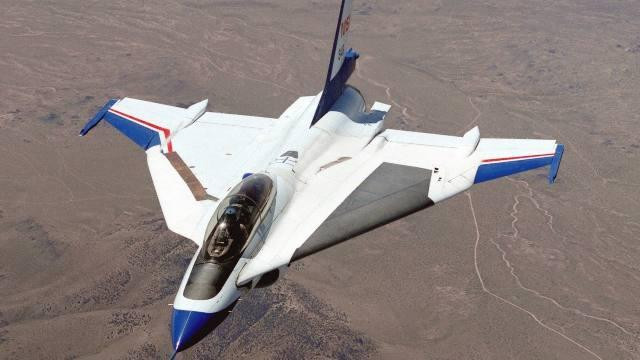In the annals of aviation history, few aircraft have captured the imagination quite like the F-16XL, a remarkable yet often overlooked chapter in the evolution of fighter jets. Born from the legendary F-16 Fighting Falcon, the F-16XL was a radical redesign that promised to redefine air combat with its innovative features and unmatched performance. Although it never entered full-scale production, the F-16XL remains a testament to the cutting-edge technology and visionary thinking that drove military aviation during the Cold War.
The story of the F-16XL begins in the late 1970s, when General Dynamics sought to create a new variant of the F-16 that could outperform its predecessors in every way. The result was an aircraft that looked like it had been plucked straight from the pages of a science fiction novel. With its distinctive cranked-arrow delta wing, the F-16XL was instantly recognizable and boasted a number of features that set it apart from the standard F-16.

The most striking aspect of the F-16XL was its wing design. Unlike the traditional F-16, which featured a conventional trapezoidal wing, the F-16XL’s delta wing provided a significant increase in surface area. This design allowed the aircraft to carry nearly twice the ordnance of a standard F-16, giving it unprecedented firepower for a fighter of its size. Additionally, the unique wing shape improved the aircraft’s lift-to-drag ratio, enabling it to fly faster, farther, and more efficiently than its predecessor.
The F-16XL was not just about raw power; it was also designed with versatility in mind. The expanded wing area allowed for a greater range of weapon configurations, making the F-16XL a formidable multi-role fighter. Whether engaging in air-to-air combat, performing ground-attack missions, or delivering precision strikes, the F-16XL was capable of doing it all, and doing it better than any aircraft that came before it.

Despite its impressive capabilities, the F-16XL faced stiff competition. The U.S. Air Force was conducting a competition to find a replacement for the F-111 Aardvark, and the F-16XL was up against another formidable contender—the F-15E Strike Eagle. In the end, the F-15E was chosen for production, primarily due to its twin-engine design, which offered better safety and redundancy for long-range strike missions.
Although the F-16XL was not selected for production, it was far from a failure. The prototypes continued to serve as valuable testbeds for advanced aerodynamics and avionics, contributing to the development of future fighter aircraft. The knowledge gained from the F-16XL program influenced the design of later aircraft, including the F-22 Raptor and the F-35 Lightning II.

Today, the F-16XL remains an aviation icon, a symbol of what might have been and a reminder of the relentless pursuit of innovation that drives the world of military aviation. While it never saw combat or widespread service, the F-16XL’s legacy lives on in the countless advancements it inspired, proving that even the projects that don’t make it to the front lines can leave an indelible mark on history.





